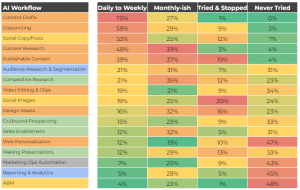By Sam Becker
If you’re one of the millions of U.S. taxpayers who have waited months or years to speak with an IRS agent, get an update on your filing status, or receive a refund, the tax man has some good news for you.
The Internal Revenue Service (IRS) this week announced “an ambitious effort to transform the tax agency and dramatically improve service to taxpayers and the nation during the next decade,” according to a news release from the agency. The new “Strategic Operating Plan” comprises a 150-page report that details how the IRS plans to implement changes after an influx of funding included in last year’s Inflation Reduction Act, which was signed into law last August by President Biden.
In all, the legislation shepherded an additional $79.6 billion to the IRS to supplement its typical annual appropriations. The resources, per the new plan, will be used to tackle three primary objectives: enhance the agency’s customer service operations, beef up resources to “unpack the complex filings” of wealthy individuals and large corporations, and update outdated technology and security systems.
As for how the IRS plans to make life easier for the average taxpayer, the plan lays out five key objectives. They are:
- Simplify and streamline: “Dramatically improve services to help taxpayers meet their obligations and receive the tax incentives for which they are eligible.”
- Act faster: “Quickly resolve taxpayer issues when they arise.”
- Crack down on wealthy scofflaws: “Focus expanded enforcement on taxpayers with complex tax filings and high-dollar noncompliance to address the tax gap.”
- Upgrade outdated tech: “Deliver cutting-edge technology, data and analytics to operate more effectively.”
- Beef up: “Attract, retain and empower a highly skilled, diverse workforce and develop a culture that is better equipped to deliver results for taxpayers.”
Again, this is likely to be music to the ears of anyone who’s needed to interact or contact the IRS for one reason or another in recent years. The agency was sitting on a backlog of millions of unprocessed returns, mostly due to the pandemic—as of late March 2023, there are still more than 2 million returns waiting to be processed from 2021 and 2022—and many people, with no easy way to reach out, have had to simply sit and wait for their refunds, if they were due one.
As such, the fresh funding and strategic plan should, hopefully, help smooth things out in the coming years—though that’s far from a sure thing. The IRS still faces huge staffing shortages and is using technology and IT systems that would be hard to find in any modern business setting. A recent report from the Government Accountability Office (GAO) says that the “IRS uses hundreds of applications, software, and hardware systems that are outdated—25 years or older, or written in a programming language that is no longer used.” Further, “IRS officials said the system wouldn’t be fully replaced until 2030 at the earliest—at which time it will be 60 years old.”
Clearly, the agency has a lot of catching up to do, so improvements that are made may not be immediately obvious. It’ll take some time, in other words, but a decade from now, the IRS should be better equipped to function in the modern world if its plan works as intended.
“The plan is a bold look at what the future can look like for taxpayers and the IRS,” said IRS commissioner Danny Werfel in a statement. “Now that we have long-term funding, the IRS has an opportunity to transform its operations and provide the service people deserve.”
(12)
Report Post








